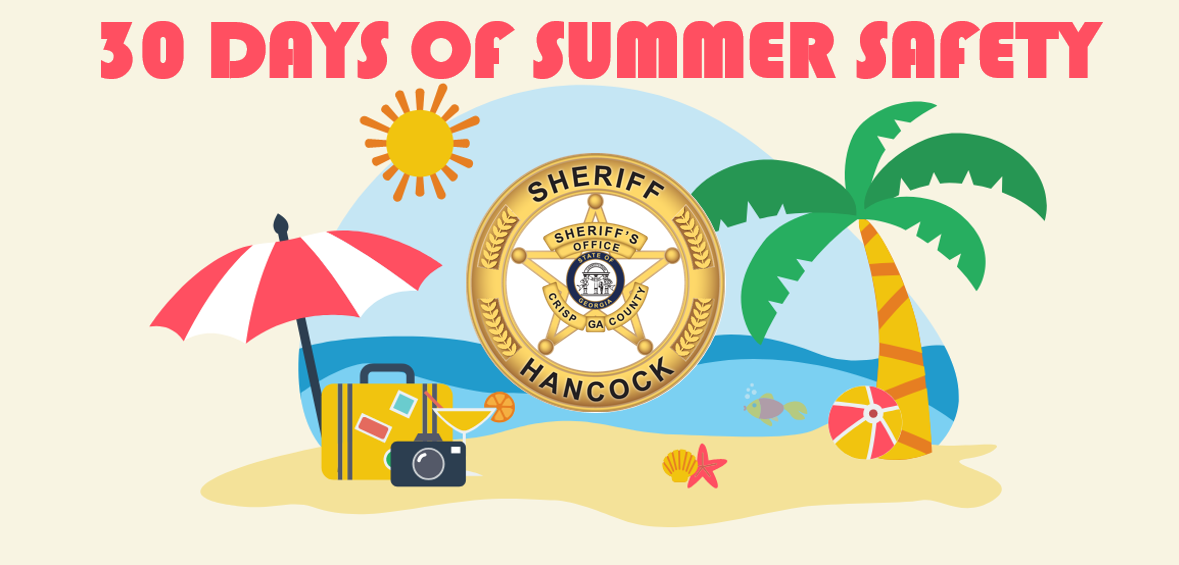30 Days of Summer Safety (Days 15-21)
Summer is a great time for kids to enjoy different indoor and outdoor activities. Whether they are young children or teens, learn ways to keep your kids safe and healthy while they enjoy the summer fun.
Day 15 Master water safety
Water-related activities are popular for getting physical activity and have many health benefits. Here are some tips to stay safe while having fun.
- Learn how to prevent recreational water illnessesand help protect yourself and your kids.
- Help kids get H2O Smartz about water safety.
Drownings are the leading cause of injury death for young children ages 1 to 4, and three children die every day as a result of drowning.
- Always supervise children when in or around water. A responsible adult should constantly watch young children.
- Teach kids to swim. Formal swimming lessons can protect young children from drowning.
- Learn cardiopulmonary resuscitation (CPR). Your CPR skills could save someone’s life.
- Install a four-sided fence around home pools.
Recreational boating can be a wonderful way to spend time with family and friends. Make boating safety a priority.
- Wear a properly fitted life jacket every time you and your loved ones are on the water.
Source: https://www.cdc.gov/family/kids/summer/index.htm
Day 16- Prevent Injuries
Each year in the United States, emergency departments treat more than 200,000 children ages 14 and younger for playground-related injuries. Falls at home and on the playground are a common cause of injury.
- Check to make sure that the surfaces under playground equipment are safe, soft, and well-maintained.
- Supervise young children at all times around fall hazards, such as stairs and playground equipment.
- Use stair gates, which can help keep a busy, active child from taking a dangerous tumble.
A concussion is a type of traumatic brain injury caused by a bump, blow, or jolt to the head that can change the way your brain normally works. Concussions can occur in any sport or recreation activity.
- Learn concussion signs and symptoms and what to do if a concussion occurs.
- Make sure kids and teens wear the right protective equipment for their sport or recreation activity.
Parents can take many actions to protect their children’s health and safety at home.
- Stay smart around the house by following tips on fire prevention, microwave use, and living with pets.
- Learn healthy home tips for each room in the house.
Young workers have high job injury rates. Hazards in the workplace, inexperience, and lack of safety training may increase injury risks for young workers.
- Know their rights, employer and teen worker responsibilities, and what teens under 18 can’t do.
Source: https://www.cdc.gov/family/kids/summer/index.htm
Day 17- Beat the heat and sun
Heat-related illness happens when the body’s temperature control system is overloaded. Infants and children up to 4 years of age are at greatest risk. Even young and healthy people can get sick from the heat if they participate in strenuous physical activities during hot weather. For heat-related illness, the best defense is prevention.
Never leave infants, children, or pets in a parked car, even if the windows are cracked open.
Dress infants and children in loose, lightweight, light-colored clothing.
Schedule outdoor activities carefully, for morning and evening hours.
Stay cool with cool showers or baths.
Seek medical care immediate if your child has symptoms of heat-related illness.
Just a few serious sunburns can increase you and your child’s risk of skin cancer later in life. Their skin needs protection from the sun’s harmful ultraviolet (UV) rays whenever they’re outdoors.
Cover up. Clothing that covers your and your child’s skin helps protect against UV rays.
Use sunscreen with at least SPF (sun protection factor) 15 and UVA (ultraviolet A) and UVB (ultraviolet B) protection every time you and your child go outside.
Source: https://www.cdc.gov/family/kids/summer/index.htm
Day 18- Find the Right Car Seat for Your Child
Car seats and boosters provide protection for infants and children in a crash, yet car crashes are a leading cause of death for children ages 1 to 13. That's why it's so important to choose and use the right car seat correctly every time your child is in the car. Follow these important steps to choose the right seat, install it correctly, and keep your child safe.
https://www.nhtsa.gov/equipment/car-seats-and-booster-seats
Day 19- Child Passenger Safety
37% of Children killed in car crashes in 2017 were unrestrained.
Keep your child in a booster seat until he or she is big enough to fit in a seat belt properly. For a seat belt to fit properly the lap belt must lie snugly across the upper thighs, not the stomach. The shoulder belt should lie snugly across the shoulder and chest and not cross the neck or face. Remember: your child should still ride in the back seat because it’s safer there.
https://www.nhtsa.gov/equipment/car-seats-and-booster-seats
Day 20- Teen Driver Safety
Motor vehicle crashes are the leading cause of death for U.S. teens. Six teens aged 16 to 19 die every day from motor vehicle crash injuries.1 Per mile driven, teen drivers aged 16 to 19 are nearly three times more likely than drivers aged 20 and older to be in a fatal crash. For safety tips and proven strategies visit : https://www.cdc.gov/motorvehiclesafety/teen_drivers/index.html
Day 21 – ATV Safety
ABOUT ATV SAFETY
The ATV Safety Institute's Golden Rules:
Always wear a DOT-compliant helmet, goggles, long sleeves, long pants, over-the-ankle boots, and gloves.
Never ride on paved roads except to cross when done safely and permitted by law - another vehicle could hit you. ATVs are designed to be operated off-highway.
Never ride under the influence of alcohol or drugs.
Never carry a passenger on a single-rider ATV, and no more than one passenger on an ATV specifically designed for two people.
Ride an ATV that's right for your age.
Supervise riders younger than 16; ATVs are not toys.
Ride only on designated trails and at a safe speed.
Take a hands-on ATV RiderCourseSM and the free online E-Course.
To learn more about ATV safety call 800.887.2887
https://atvsafety.org/

